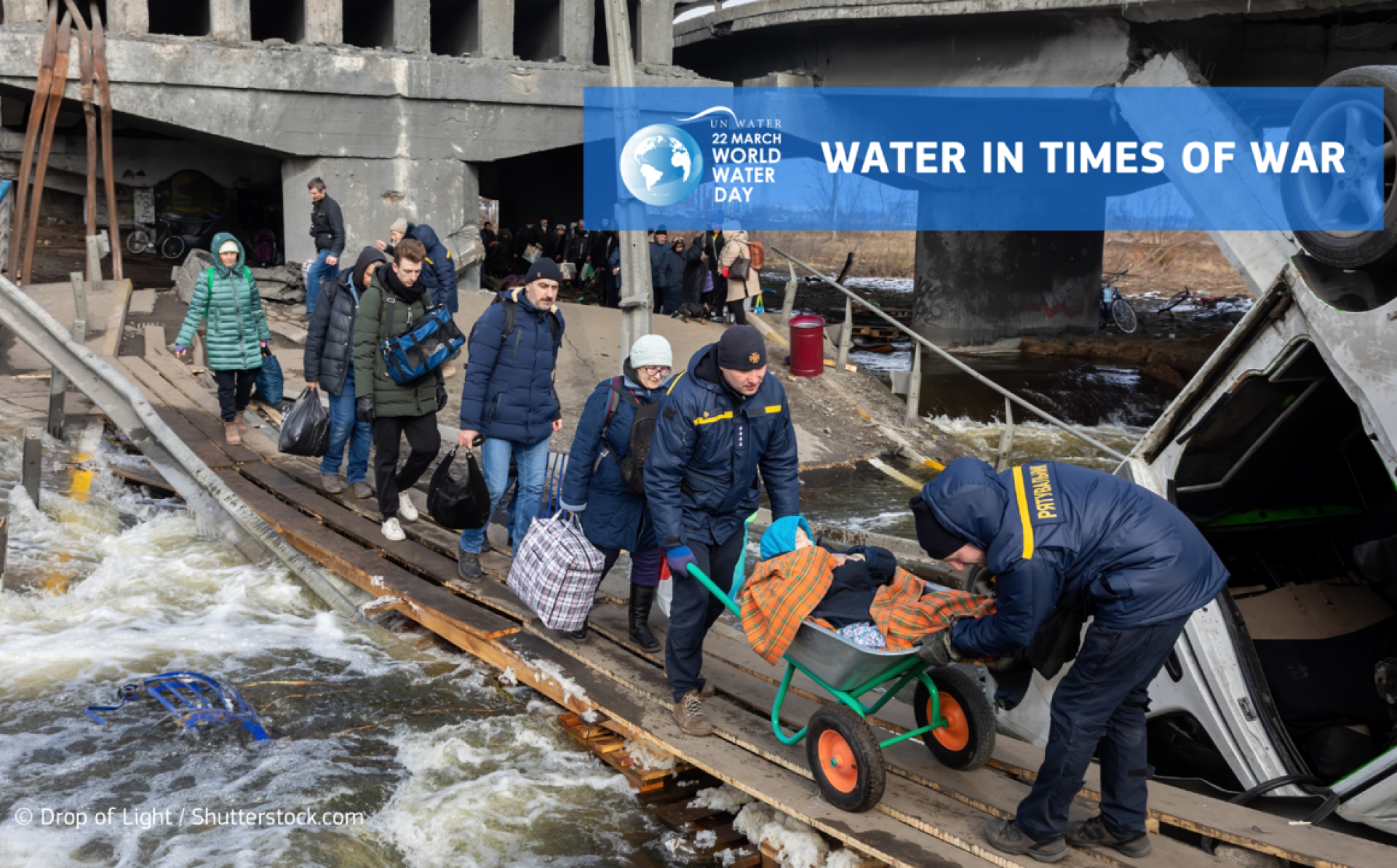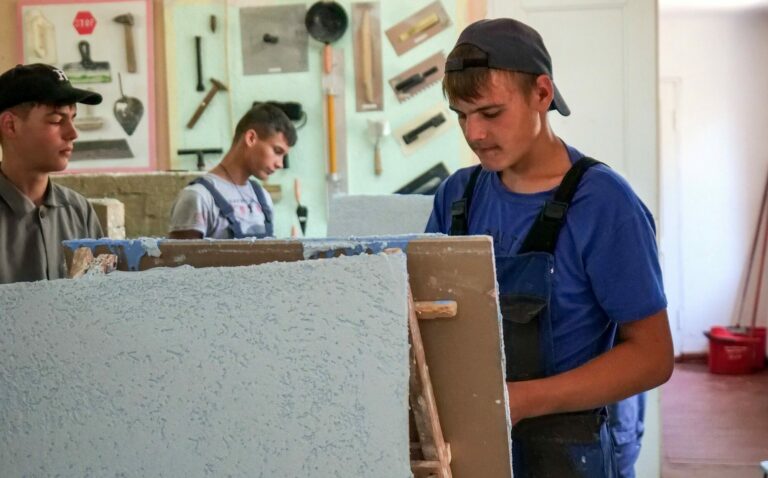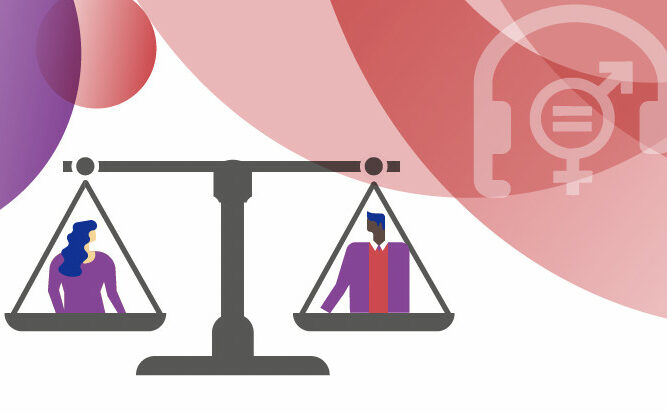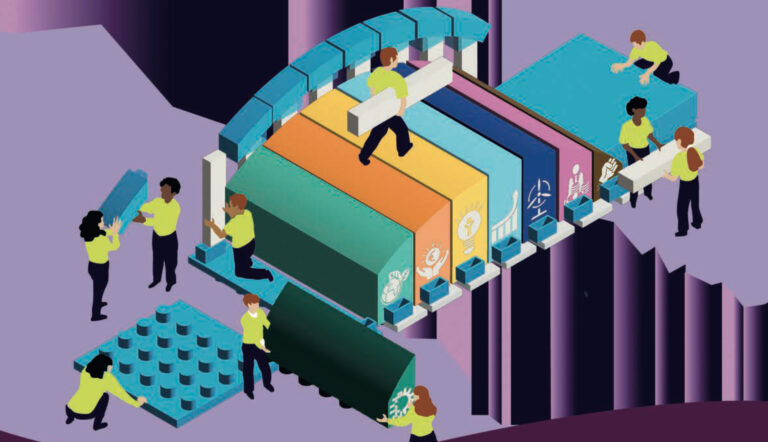
World Water Day: water in times of war – the case of Ukraine
The European Union and its international partners are united in condemning Russia’s brutal aggression on Ukraine. The impact of the war on civilians is reaching terrifying proportions. As of 20 March, according to the UN refugee agency, 10 million Ukrainians fled their homes because of the war, of which around 3.4 million have crossed into neighbouring countries. Countless innocent people – including women and children – have been killed. Infrastructure worth some €90 billion has been destroyed,according to government estimates, including buildings, roads, bridges, hospitals, schools, industrial facilities and other physical assets.
The war is also having a detrimental impact on the environment in Ukraine, Europe and globally. According to the European Environment Agency, depending on the extent of the destruction caused by the war and the type of arsenal deployed, toxic chemicals in water, soil and the air might persist for decades to come, harming human health, habitats and species. In addition to pollution, debris, waste and destruction of ecosystems, wars and the reconstruction in their aftermath are very resource intensive, exerting additional pressures and demands on energy and construction materials.
What are the impacts of war on human health and water ecosystems?
In times of war, both human health and the environment are affected.
Damage to water supply and sanitation can deprive people of their human right of access to water. Water supply and wastewater treatment plants and networks, monitoring systems and other important infrastructure can stop functioning, fully or partially, because of physical destruction by shelling, electricity cuts, lack of supplies, or maintenance personnel losing control, access or being forced to flee the premises.
In areas of Ukraine directly concerned by military action, access to water supply and sanitation is among the key concerns. Ukrainian cities under siege are suffering an extreme humanitarian crisis: the Red Cross has described the situation in Mariupol as “apocalyptic”. Hundreds of thousands of civilians have lost access to drinking water. According to media reports, people in Mariupol have been forced to melt snow for drinking water and cook on open fires with food, water and power supplies cut off. Let us recall that the Human Right to Water and Sanitation was recognised by the United Nations in July 2010.
In such conditions, the risk of waterborne infectious diseases is maximal. One such infectious disease is cholera. Since the 1960s, the Southern part of Ukraine has been exposed to several epidemics of cholera. The last cholera outbreak in Europe happened in 2011 in Mariupol. The UN Children’s Fund (UNICEF) pointed out in a 2019 report that during conflicts, unsafe water can be just as deadly as bullets. On average, children under the age of 15 who are living in conflict are nearly three times more likely to die from diseases linked to unsafe water and sanitation than from direct violence.
For younger children, the situation is worse. Children under five years old are more than 20 times more likely to die from diseases linked to unsafe water and sanitation than from direct violence.
Moreover, wars increase pollution in rivers, lakes, wetlands and aquifers. For example, air strikes and shelling can destroy industrial installations, landfill sites and waste storage facilities, including mining tailings. This can result in spills of hazardous substances.
Water can also become a weapon and its use to achieve military objectives is no new phenomenon. A destroyed dam can flood lands and cities far downstream, such as may be the case on the Dnipro river impoundments. Seizing strategic water infrastructure can become a military purpose in itself. For example, Russia captured the Kakhovska hydropower plant, one of the largest of its kind in Ukraine. The hydropower plant is located on the reservoir cooling the Zaporizhzhya Nuclear Power Plant which in turn the largest in Europe and one of the ten largest in the world.
War is also a serious blow to transboundary cooperation. The war leads to various cross-border transport of air and water pollution, notably via rivers into the Black Sea with its sensitive ecosystem that was already damaged in past decades. It is impossible to know how much time it may take to revive dialogue on the river basins shared with Russia and Belarus.
What can be done to protect human health from waterborne diseases?
The World Health Organization (WHO) stresses the importance of preventing the development and spread of waterborne diseases in conditions where these diseases can easily attain epidemic proportions, especially in war affected or spontaneous settlements.
Access to sanitary facilities, including hand-washing, and sufficient amounts of safe drinking-water is critical for the prevention of waterborne diseases. Water, sanitation and hygiene facilities at reception centres and border points should be thoroughly assessed. Local authorities must aim to monitor the microbiological quality of drinking-water closely.
When necessary, emergency watersupplies should be established (e.g. packaged water, trucked water and/or mobile water treatment, disinfection and storage units). Hand-washing facilities and sufficient soap should always be available near toilets.
What is already being done for water and the environment to support Ukraine during the war?
With the currently severe strain of Ukraine’s water and environmental management and the loss of, or damage to, significant parts of the country’s monitoring network, collecting reliable information becomes a priority. The Ministry of Environmental Protection and Natural Resources of Ukraine has already called on Ukrainian NGOs and other partners to help collect data to document war damage to the environment. The State Ecological Inspectorate (SEI) in Ukraine continues to record the consequences of Russian aggression in areas where sewage treatment plants are located.
On 15 March, Acting Minister of Environment and Natural Resources of Ukraine Ruslan Strilets met with EU Commissioner for Environment, Oceans and Fisheries Virginius Sinkevičius. At this meeting, the Minister identified his department’s main priorities in connection with the consequences of military action in the field of environment.
International organisations are scaling up similar efforts too, not least to help support the eventual post-war reconstruction and to help ensure that it is done in the most climate and environment conscious way possible. The scale and the cost of environmental damage may also become the subject of future legal cases at international courts addressing war crimes.
Today, Ukraine needs urgent access to safe drinking water for regions isolated by the war. And it will need support tomorrow to restore and rebuild the country, including its water and environmental governance, management and monitoring.
The EU, and the international community, stand with Ukraine and its people ready to address their most pressing needs and to support the long-term recovery and further development of the country.
Written by the EU4Environment – Water Resources and Environmental Data in the Eastern Partner Countries programme in cooperation with Zoï Environment Network. https://www.eu4environment.org
Download
MOST READ
RELATED PROJECTS
RELATED

EU4Youth Newsletter: Welcome to the EU4Youth Stakeholder Hub!

EU4Youth develops Youth Wiki reports on Youth Employment and Employability

EU4Gender Equality Reform Helpdesk’s support (2021-2024) for Ukraine

SME Policy Index: Eastern Partner Countries 2024 – Building Resilience in Challenging Times

Women’s economic empowerment: Good practices in Eastern Neighbourhood countries
More campaign pages:
Interested in the latest news and opportunities?
This website is managed by the EU-funded Regional Communication Programme for the Eastern Neighbourhood ('EU NEIGHBOURS east’), which complements and supports the communication of the Delegations of the European Union in the Eastern partner countries, and works under the guidance of the European Commission’s Directorate-General for Neighbourhood Policy and Enlargement Negotiations, and the European External Action Service. EU NEIGHBOURS east is implemented by a GOPA PACE-led consortium. It is part of the larger Neighbourhood Communication Programme (2020-2024) for the EU's Eastern and Southern Neighbourhood, which also includes 'EU NEIGHBOURS south’ project that runs the EU Neighbours portal.

The information on this site is subject to a Disclaimer and Protection of personal data. © European Union,








